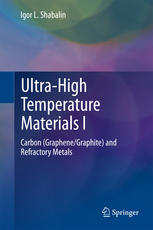

Most ebook files are in PDF format, so you can easily read them using various software such as Foxit Reader or directly on the Google Chrome browser.
Some ebook files are released by publishers in other formats such as .awz, .mobi, .epub, .fb2, etc. You may need to install specific software to read these formats on mobile/PC, such as Calibre.
Please read the tutorial at this link: https://ebookbell.com/faq
We offer FREE conversion to the popular formats you request; however, this may take some time. Therefore, right after payment, please email us, and we will try to provide the service as quickly as possible.
For some exceptional file formats or broken links (if any), please refrain from opening any disputes. Instead, email us first, and we will try to assist within a maximum of 6 hours.
EbookBell Team

4.0
76 reviewsThis exhaustive work in three volumes with featuring cross-reference system provides a thorough overview of ultra-high temperature materials – from elements and chemical compounds to alloys and composites. Topics included are physical (crystallographic, thermodynamic, thermo-physical, electrical, optical, physico-mechanical, nuclear) and chemical (solid-state diffusion, interaction with chemical elements and compounds, interaction with gases, vapours and aqueous solutions) properties of the individual physico-chemical phases and multi-phase materials with melting (or sublimation) points over or about 2500 °C. The first volume focuses on carbon (graphite/graphene) and refractory metals (W, Re, Os, Ta, Mo, Nb, Ir). The second and third volumes are dedicated solely to refractory (ceramic) compounds (oxides, nitrides, carbides, borides, silicides) and to the complex materials – refractory alloys, carbon and ceramic composites, respectively. It will be of interest to researchers, engineers, postgraduate, graduate and undergraduate students in various disciplines alike. The reader is provided with the full qualitative and quantitative assessment for the materials, which could be applied in various engineering devices and environmental conditions at ultra-high temperatures, on the basis of the latest updates in the field of physics, chemistry, materials science, nanotechnology and engineering.